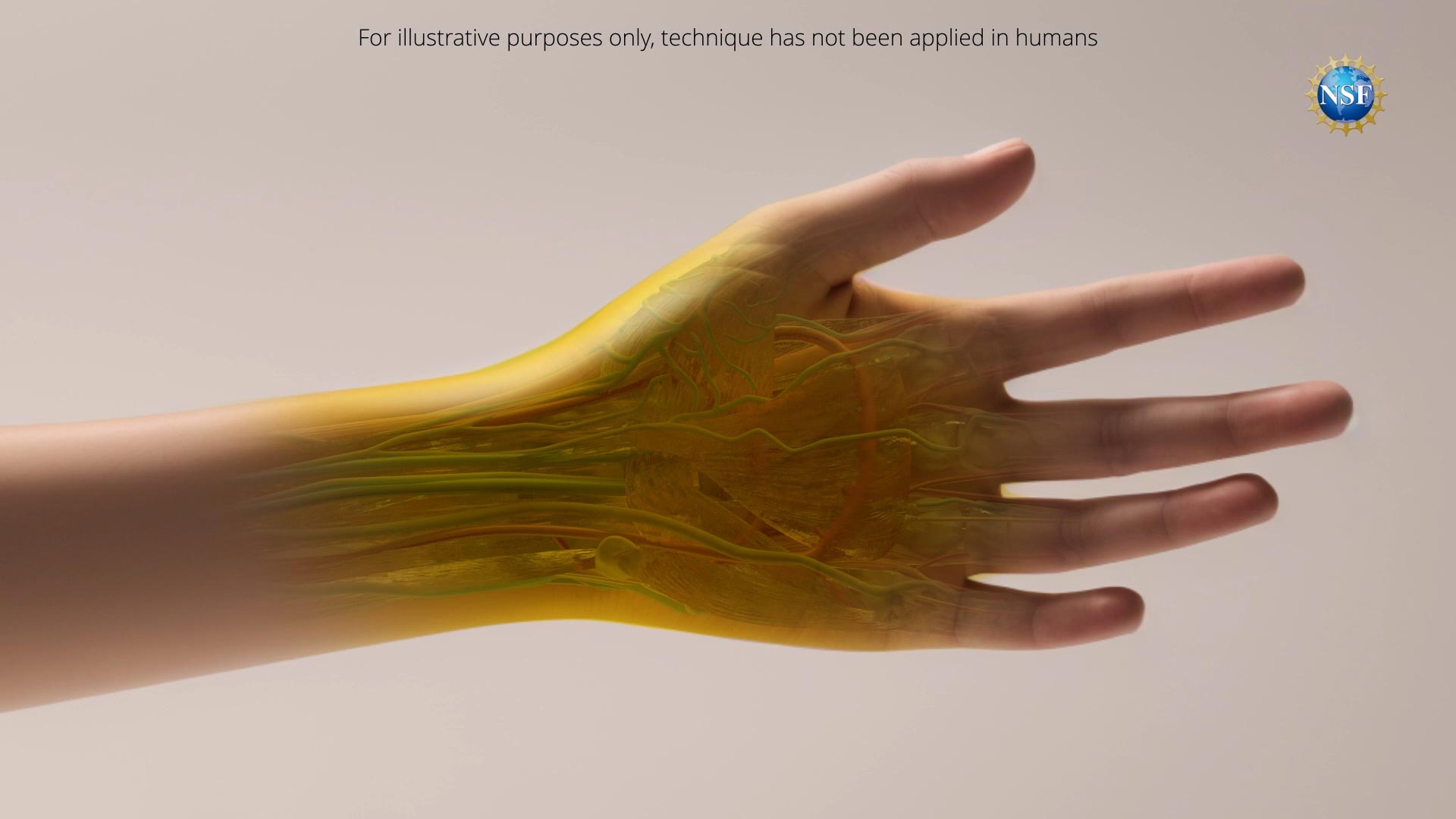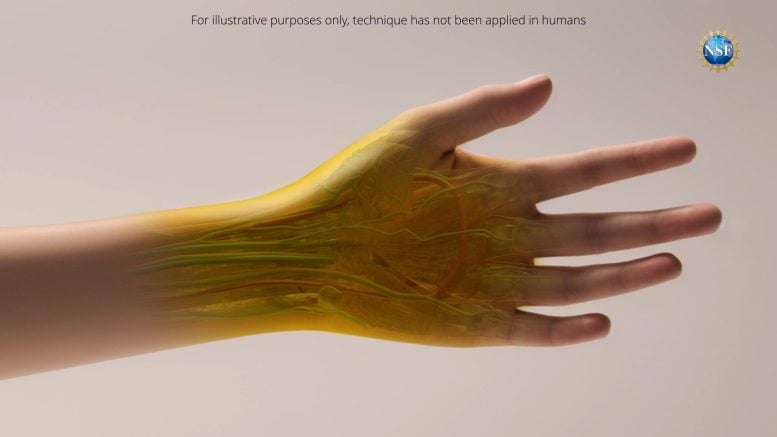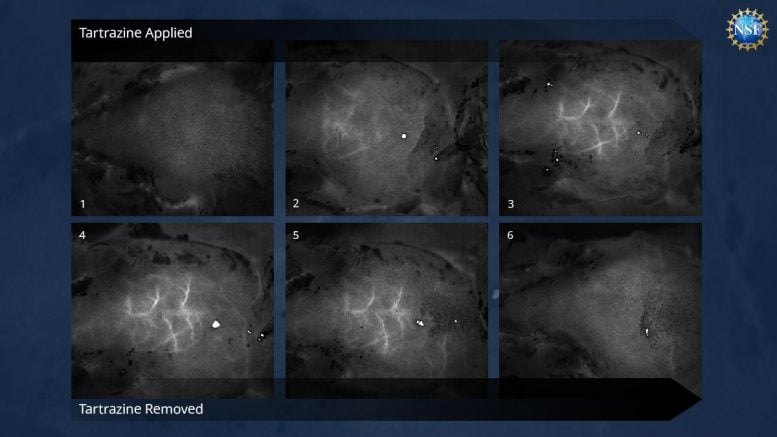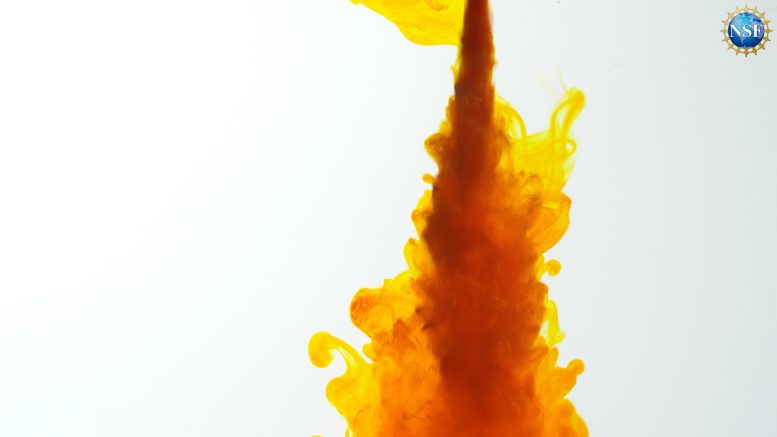

Researchers have developed a method to turn the tissues of a live mouse transparent using a common food dye called tartrazine, which absorbs specific light wavelengths.
This innovative technique modifies the refractive index of tissues, allowing enhanced visualization of internal structures such as blood vessels and muscle units without harming the animal. The transparency effect is temporary and reversible, offering exciting new possibilities for non-invasive medical imaging.
Innovative Use of Food Dye in Research
By topically applying a common food dye that strongly absorbs light to a live mouse, Zihao Ou and colleagues were able to turn its tissues transparent, allowing them a look into the blood vessels of the scalp, the movement of organs laying under the skin of the abdomen, and tiny contractile units of muscle at work.
Achieving optical transparency in live animals depends on some interesting physics, where strongly absorbing dye molecules enhance light transmission through a medium usually characterized by substantial light scattering.

Achieving Transparency in Live Tissues
This scattering is the result of a low refractive index in aqueous parts of tissue and a high refractive index of its protein and fat-based component. Typical methods of tissue clearing can involve processes such as clearing proteins and fats, which wouldn’t work in a live animal.
Researchers at Stanford University have developed a way to make skin and other tissues transparent using a simple food dye, a reversible technique with potential for revolutionizing internal medicine. In this clip, thin slices of chicken breast become transparent on exposure to the dye FD & C Yellow 5. Credit: U.S. National Science Foundation
The Role of Tartrazine in Tissue Transparency
Ou et al. found that a common food dye called tartrazine (mixed with water, it’s called FD&C Yellow 5) topically applied can modify the refractive index of the aqueous parts of tissue by absorbing light in the near ultraviolet and blue regions of the spectrum, to better match the refractive index of nearby high-refractive materials.
This allows the non-absorbing part of the spectrum, namely the red/orange part, to transmit deeper through the tissue.

Implications for Medical Imaging
The result is a temporary transparency effect that can be undone with a quick wash, and does not harm living animals, unlike other approaches used to enhance transparency.
Christopher Rowlands and Jon Gorecki discuss the imaging possibilities of the technology in a related Perspective.
Animation depicting the tissue transparency effect and how it might appear if tested with humans in the future. The latter part of the animation shows how photons interact with tissues at the cellular level, both with and without FD & C Yellow 5 saturation. Credit: Keyi “Onyx” Li/U.S. National Science Foundation
For more on this research:
References:
“Achieving optical transparency in live animals with absorbing molecules” by Zihao Ou, Yi-Shiou Duh, Nicholas J. Rommelfanger, Carl H. C. Keck, Shan Jiang, Kenneth BrinsonJr, Su Zhao, Elizabeth L. Schmidt, Xiang Wu, Fan Yang, Betty Cai, Han Cui, Wei Qi, Shifu Wu, Adarsh Tantry, Richard Roth, Jun Ding, Xiaoke Chen, Julia A. Kaltschmidt, Mark L. Brongersma and Guosong Hong, 6 September 2024, Science.
DOI: 10.1126/science.adm6869
“Turning tissues temporarily transparent” by Christopher J. Rowlands and Jon Gorecki, 5 September 2024, Science.
DOI: 10.1126/science.adr7935